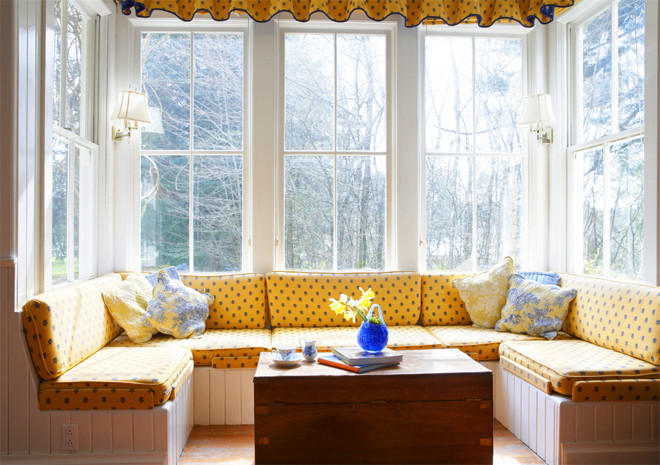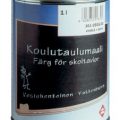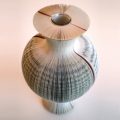If you are determined to join the loggia andindependently insulate it, then immediately get ready for the fact that this is a whole story in which creative ideas can not always be realized due to complex technologies or paperwork. In addition, often the result is not at all what you expected. To avoid, say, the bulging of the insulated wall from under the glazing, dripping condensation from the ceiling, the inconvenient location of window handles and other troubles - study the list of common mistakes that you shouldn’t make. Photo: Getty Images
Photo: Getty Images
Illegal redevelopment
It would seem that everyone has long known that it is necessary to conductreorganization and redevelopment of any premises (kitchen, bathroom, room, loggia, etc.) is not worth it, because you can face a number of problems, which then threaten to turn into a significant fine. If suddenly you decided to demolish the wall between, say, the living room and the loggia (while you only plan to insulate the latter), then you, of course, should inform the BTI representatives of your ideas. Otherwise, later when selling the apartment, you can face problems, especially if there are discrepancies in the technical passport of this housing. But if you only plan to glaze the balcony with sliding glass units with an aluminum profile and equip, say, an unheated summer version of a study, then you do not need to obtain a special permit.
Additional wall insulation between the loggia and the room
In case you do joinloggia to the main room, then this wall becomes internal, accordingly, there is no point in additionally facing it with all sorts of heat-insulating materials. After all, this will not make the apartment warmer or cooler, but will only be a waste of money.
Installation of the radiator on the loggia
What could be more logical than taking it out onto the loggia?radiator, thus creating a comfortable microclimate in this room? But, unfortunately, not everything is so simple! If you have been given permission for redevelopment, then perhaps such a thought will not even occur to you. And if not? Just remember that it is strictly forbidden to bring pipes or the radiator itself outside the external wall. After all, if improperly insulated, the pipes can freeze, which will entail serious accidents and discontent of other residents. Instead, it is better to pay attention to an electric heated floor or an oil radiator, which can be easily attached to the wall.
Incorrect floor construction
Speaking of flooring!Do not use a thick layer of sand-concrete screed, on which a solid layer of tile adhesive will subsequently be laid, and then ceramic cladding, in order to achieve a perfectly flat floor. After all, overloading the ceiling is dangerous! It is much more reasonable to use ultra-light materials for insulation. For example, it is recommended to lay soft insulation directly on top of concrete slabs, then as a second layer you can use more insulation, not forgetting about waterproofing, and then on top of this layer you can make a thin screed.
Single layer insulation
To create a comfortable microclimate on the loggia,It is recommended to use foam block masonry (at least 70-100 ml thick) for the parapet and walls. Experts point out that this material has excellent thermal insulation properties and frost resistance, so it will definitely save you in the cold season. In addition, for additional protection from frost, you can add stone wool to the extruded polystyrene foam panel or slab.
Correct glazing
In fact, many experts recommendtake a closer look at frameless sashes, which look like a smooth surface when closed and are very convenient to assemble (“accordion”), without eating up the space of the room. But this option will be good only if you are not going to insulate your loggia. Otherwise, single glazing and gaps between the panels will not be able to protect you in the cold season and will collect dirt, dust and fingerprints. Therefore, you can replace them with heat-insulated lift-and-slide windows or the same PVC double-glazed windows with standard hinged sashes. By the way, many apartment owners, trying to increase their space, go even further and build a glazing frame with an extension on the loggia (which often protrudes by several tens of centimeters). This is not the best solution, because in this case, snow and water constantly accumulate at the top of the canopy, and a glass growth appears on the facade, spoiling the entire appearance of the house. Therefore, if, say, your house, according to the designer's idea, should only have open balconies (entwined with a beautiful wrought iron fence, for example), then you should not stand out and glaze/attach your own. In this case, you can take a closer look at large green plants that will hide you from prying eyes.
No vapor barrier
This should not be neglected under any circumstances.point, especially if you plan to use mineral wool as insulation. Without a vapor barrier, it will simply become damp, ruining the walls and floor on your loggia, and your neighbors below will have condensation on the ceiling. Many people believe that if they use polystyrene foam or other foamed material for insulation, then in this case they can do without a vapor barrier. But this is not entirely true. It is better to also add a thin layer of this material than to regret later that this moment was missed.
Using sealant without protection
In fact, abuse of sealantcan lead to the appearance of seams with bubbling mounting foam. And no one will like this, especially an inveterate perfectionist. In addition to aesthetic unattractiveness, they can spoil the climate in the apartment, because the foam of polyurethane sealants is afraid of direct sunlight and moisture. Therefore, without proper protection, it can quickly deteriorate, which, in turn, will lead to the appearance of cracks, drafts and will cause street noise.









